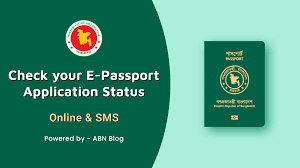Introduction
In today’s interconnected world, the traditional paper passport is gradually being replaced by the electronic passport, commonly known as the e-passport. This modern travel document incorporates a microchip that stores biometric data, offering enhanced security and efficiency in identity verification. As e-passports become more prevalent, understanding the process of e passport check is crucial for travelers and authorities alike. This comprehensive guide delves into the intricacies of e-passport verification, its benefits, challenges, and the future of digital travel documents.
What is an E-Passport?
An e-passport, or electronic passport, is a modern travel document embedded with a microchip that contains the holder’s biometric information. This includes facial recognition data, fingerprints, and sometimes iris scans. The chip enhances security by making the passport more difficult to forge and streamlines the identification process at border controls.
The Evolution of Passports
Traditional paper passports have been used for centuries, but the rise of digital technology has paved the way for more secure and efficient identification methods. E-passports were first introduced in the early 2000s, with the goal of improving security and reducing identity fraud. Over time, more countries have adopted this technology, making e-passport checks a standard procedure in international travel.
How E-Passport Verification Works
E-passport verification involves several steps to ensure the authenticity and validity of the travel document. Here’s a breakdown of the process:
- Data Reading: The microchip embedded in the e-passport is read by a specialized machine at the border control. This machine uses radio-frequency identification (RFID) technology to access the data stored in the chip.
- Biometric Comparison: The biometric data stored in the chip, such as facial recognition or fingerprints, is compared with the data obtained during the traveler’s current inspection. This ensures that the person presenting the passport is its legitimate owner.
- Security Features Check: E-passports are equipped with various security features, such as digital signatures, holograms, and watermarks. These features are verified to confirm the document’s authenticity and integrity.
- Database Cross-Referencing: The information on the e-passport is cross-referenced with international databases to check for any alerts or issues, such as stolen passports or individuals on watch lists.
Benefits of E-Passport Verification
The adoption of e-passports and their verification processes brings several advantages:
- Enhanced Security: The biometric data stored in e-passports significantly reduces the risk of identity theft and fraud. The sophisticated security features make it challenging for counterfeiters to replicate the document.
- Speed and Efficiency: E-passport checks streamline the border control process, reducing waiting times for travelers. The automated verification systems can process large volumes of passengers quickly and accurately.
- Improved Data Accuracy: The digital nature of e-passports ensures that the data is accurate and up-to-date. This reduces the likelihood of errors that can occur with handwritten or manually entered information.
- Global Standardization: E-passports promote a uniform standard for international travel documents, facilitating smoother and more consistent procedures at border crossings worldwide.
Challenges in E-Passport Verification
Despite the numerous benefits, the implementation and verification of e-passports also present certain challenges:
- Technological Dependence: The reliance on technology means that any technical malfunction or cyber-attack could disrupt the verification process. Border control systems must be robust and resilient to handle such issues.
- Privacy Concerns: The storage and use of biometric data raise concerns about privacy and data protection. It is essential to ensure that this sensitive information is safeguarded against unauthorized access and misuse.
- Infrastructure Costs: Establishing the necessary infrastructure for e-passport verification, including RFID readers and biometric scanners, can be expensive. Developing countries may face challenges in implementing these systems.
- Interoperability Issues: Different countries may use varying technologies and standards for e-passports, leading to interoperability challenges. Harmonizing these standards is crucial for seamless international travel.
Future of E-Passport Verification
The future of e-passport verification looks promising, with continuous advancements in technology and security measures. Some potential developments include:
- Blockchain Technology: Blockchain could be used to enhance the security and transparency of e-passport data. By creating a decentralized and tamper-proof ledger, blockchain can prevent unauthorized alterations and ensure the integrity of travel documents.
- Mobile Integration: The integration of e-passport functions into mobile devices is a possibility. Digital travel credentials stored on smartphones could replace physical passports, making the verification process even more convenient.
- Artificial Intelligence: AI-powered systems can improve the accuracy and efficiency of e-passport checks. Machine learning algorithms can quickly identify patterns and anomalies, enhancing fraud detection and streamlining the process.
- Global Collaboration: Increased collaboration between countries can lead to standardized e-passport systems and verification procedures. This would facilitate smoother travel and improve security on a global scale.
Practical Tips for Travelers
For travelers using e-passports, here are some practical tips to ensure a smooth verification process:
- Check Passport Validity: Ensure your e-passport is valid and has not expired before your trip. Some countries require passports to be valid for at least six months beyond your travel dates.
- Protect Your Passport: Keep your e-passport in good condition. Avoid bending or damaging the microchip, as this can affect its readability.
- Stay Informed: Be aware of the e-passport verification procedures at your destination. Different countries may have varying processes and requirements.
- Secure Your Biometric Data: Be cautious about sharing your biometric information. Only provide it to authorized personnel and at official verification points.
Conclusion
E-passport verification represents a significant leap forward in the realm of international travel. With enhanced security features, efficient processing, and global standardization, e-passports offer a robust solution to the challenges of modern border control. However, it is essential to address the associated challenges, such as privacy concerns and infrastructure costs, to fully realize the potential of this technology. As we look to the future, innovations like blockchain, mobile integration, and AI hold promise for further improving the e-passport verification process, making travel safer and more convenient for everyone.









